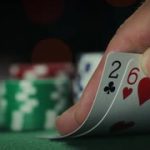Hero Open Button vs. Big Blind Call
Open Button vs. Big Blind Defense [Video below]
One of the most common spots in poker is when the action folds to the button, the button open raises for (2-3x bb), the SB folds and the BB defends with a call. Most of the time after you see  the flop, the BB will check, the BTN will continuation bet, and the BB will fold. What are you doing and how often are you winning in these spots when you whiffed (missed) the flop, and your continuation bet is called? This is one of those common spots that poker players often misplay. They either over play their bluffs in this spot, don’t bluff enough, or miss making max value. So let’s avoid all of that and dive into the nuts and bolts of how to play these situations as ideally as possible, shall we?
the flop, the BB will check, the BTN will continuation bet, and the BB will fold. What are you doing and how often are you winning in these spots when you whiffed (missed) the flop, and your continuation bet is called? This is one of those common spots that poker players often misplay. They either over play their bluffs in this spot, don’t bluff enough, or miss making max value. So let’s avoid all of that and dive into the nuts and bolts of how to play these situations as ideally as possible, shall we?
There’s a simple formula I’d recommend sticking to when you’re in a BTN vs. BB defense spot, and you’ve whiffed the pot. First point to consider is, should you continuation bet?
YES IF…
You likely don’t have much showdown value, and the board didn’t likely hit your opponents defense range much either. Example Flops: Qx 3x 5x, Tx, 2x, 6x, 5x5xJx
It might have hit some of your opponents range, but you have strong backdoor outs and over cards. Example – You hold KhTh and the flop is: 8h 9s 5c
Your opponent over folds to continuation bets and/or over defends and gives up (has low W$WSF, won dollars when seen flop).
NO IF…
You have a hand with some showdown value and the board doesn’t really help either of you. Example – You hold Ac9s and the flop is: 4c4hTd
The board hit your opponents defense range, and didn’t hit you at all. Example – You hold QcTs and the flop is: 6d7d9s
Your opponent check-raises a lot, and you don’t have a hand with showdown value or potential turn equity. Example – You hold KcJs and the flop is 6c6sQd
What’s a common Big blind defense range versus a 2.5x BB open raise from the button?
There’s no definitive answer here because you’re playing opponents who likely won’t be playing ideal GTO poker. Each type of opponent you’re facing will vary their range based on how many hands they are playing from any position. A general answer here though against most TAG (tight aggressive opponents) that are opening about 48% of their open button hands would be a range similar to this below:
[ 22+(100), A2s+(100), A2o+(100), K2s+(100), K3o+(100), Q3s+(100), Q4o+(100), J3s+(100), J6o+(100), T4s+(100), T7o+(100), 94s+(100), 97o+(100), 84s+(100), 87o(100), 74s+(100), 76o(100), 64s+(100), 54s(100) ]
Now that might be appear quite wide, and some of those hands you’ll be 3-betting as a defense. Some of the bottom of this range you can drop (cut out). But in general, getting 2.6:1 on a call, and accounting for a positional disadvantage average of -10% equity realization on your hand, you only need 38% equity (28% + 10% equity disadvantage) to call in that spot. So the above range is actually a bit conservative. Regardless of how you want to generate your ranges, you have a general idea of what people are defending with.
Let’s take a look at the basic formula once you do decide to bluff with your whiffed hand on the flop. There’s just a few main points to consider when you’re deciding how to steal this pot. The formula is as follows:
Simple formula
–TAG’s or bad players that can fold hands (not sticky players)
–Keep the pot small
–Make sure your hand tells the correct story
–Slight over bet on the river (unless the board was super draw heavy and most of your opponents range was draw, then just 1/2 pot bet or less – slightly over 1/3rd is ideal).
To gain more insight into the overall dynamics of this spot, take a look at the below video example of a hand where Hero open raises on the button with Kh9c in a 6-max cash game.
I hope the above video makes it more clear. The bottom line, just make sure you’re thinking through spots like this and not just giving up on your hand. Making these small plays makes a significant difference in your bankroll at the end of the month and year. As always, good luck at the tables!
The post Hero Open Button vs. Big Blind Call appeared first on Pokerzion.



